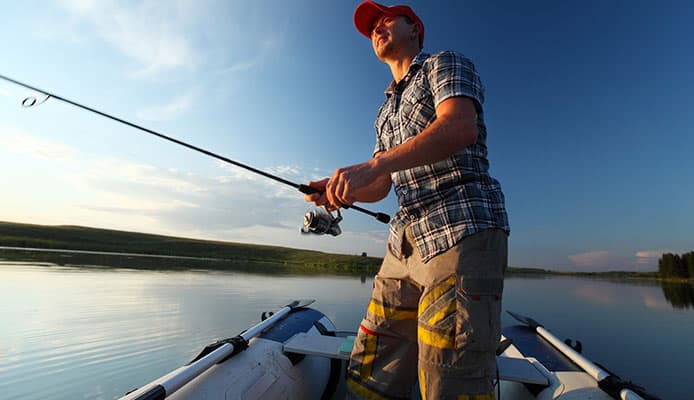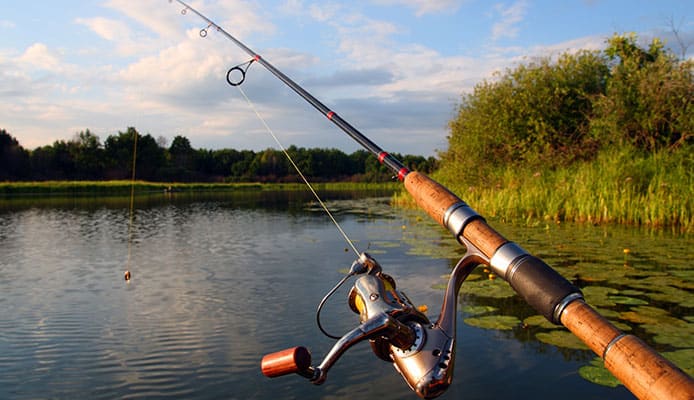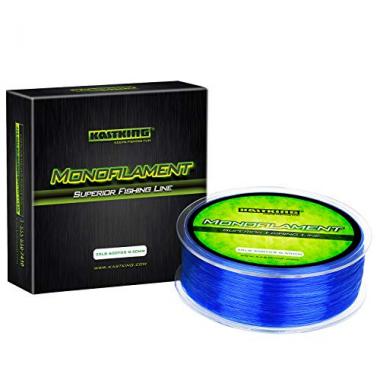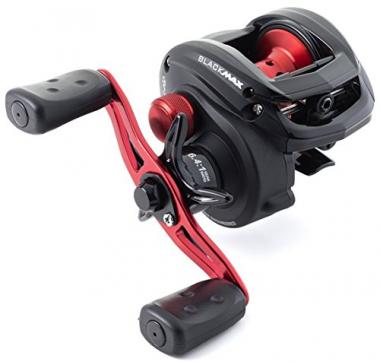
Using a spinning reel may be simple and straightforward but a baitcaster reel is more challenging and requires a higher level of skill. However, the baitcaster reel is better at fishing which explains why it is the standard equipment used when fishing for bass.
If you are planning on getting yourself a baitcaster reel, you will need to first learn how to use it correctly.
This is how to cast a baitcaster reel.
Start with a monofilament line
After you’ve got yourself the best baitcaster reel, you will need to start with the monofilament line. It should have a heavy breaking strength of between 14 to 20 pounds. And this applies even while you plan to use a lighter line later on in your fishing.
Learn how to set up a baitcasting reel like a pro.
The reason why you want to start with a heavier line is that it is very simple to learn how to use a baitcasting reel. You can pick out those backlashes far easier than if you were using a lighter line.
One of the best choices of lines to fish with is fluorocarbon. However, it is just a bit harder to cast so it’s important to start with a monofilament.
Make sure that you avoid filling the spool on the reel and begin with half a spool. Sometimes you may need to useless. When there is more line on the spool, it will make it feel heavier. This will also make it spin faster and last longer.
You need to take care not to spin too long as this causes backlashes or spool overruns. Simply start with less line.
One of the most important skills you are going to learn is to develop a smart thumb. Your thumb will be responsible for controlling the spool of line. Part of learning to use a baitcaster reel is educating your thumb to control the spool.
Sometimes you may wonder which one to choose between spinning or baitcasting reels. However, if you are after bass, the latter is far superior. That said there are some really good spinning reels for bass.
You can learn how to cast a baitcaster reel as you watch television. Take a fairly heavyweight and tie it on the thumb like a large nut. Then sit down and start by loosening the free spool control and let the weight drop freely then try and stop it before it hits the floor.
Repeat the exercise several times until you become good at stopping the reel right before the nut hits the floor. Once you get ready to cast the baitcaster reel, take a half-ounce sinker or plastic caustic plug. Then tighten the free spool control until it stops spinning right after the weight hits the floor. While you will not apply such tight casting, the exercise will allow you to learn quickly.
Practicing to cast
Now, take your baitcaster reel and rod and head outside. Perform a short lob-type cast. Start by swinging your whole arm and be careful not to snap the tip of the rod with the wrist movement. The reason for this type of cast is that as a beginner you want to avoid the reel from spinning fast. Instead, aim for a slow and even cast.
Then try and cast further distances with the next try. You can loosen up the free spool control gradually and stop it from spinning with your thumb. After you are confident with the heavyweight, go ahead and graduate to lighter weights.
This type of rod is among the best fishing rods and reels out there.
As you cast, try and ensure that you are always rotating the reel about a quarter turn. In this way, the handle should be facing up. Begin and end the cast in this way. By rotating the reel as you cast, you are going to allow the reel to spin more freely and much more smoothly. It takes practice to ensure that the reel is vertical but over time it gets easier.
And if you experience backlashes, do not worry! It is all part of the learning process. Everyone will get backlashes when they are starting. Even when you are conversant with casting the reel, there are still going to be moments when you get backlashes.
However, with more practice, you will be able to cast further distances and improve your accuracy. And soon you will understand why the baitcasting reel happens to be so popular.
You might also like: How To Set Up A Baitcasting Reel Like A Pro
Casting the baitcaster reel

The first step in casting the baitcaster reel is to reel in the line. Do this until the lure is around 12 inches from the tip of the rod. If you are fishing for sport make sure you have a good pair of fishing pliers.
Next, ensure that you are holding the rod the correct way. This is by maintaining your grip right behind the reel with your thumb on the reel spool. The bait casting rods are very much the same as spin casting rods in that you will use the same hand to reel in that you use to retrieve.
Now turn the rod until the handle of the reel is facing up. This allows you to make use of your reel when you are casting. If, however, you were to cast with your other hand, the handle would face downwards.
Next press down on the reel spool release. This is how to use a baitcasting reel and allows for longer casts since they will not turn as you cast.
It’s a good idea to learn everything you need to know about spinning reels as often you are going to graduate from these.
Now bend the casting arm at the elbow. This will enable the crook of your arm to approach the right angle. Make sure as you raise the rod that the tip rises past the vertical position but only slightly. This is the best position for you to cast out the line.
Finally, you will move the rod forward fast until it reaches a vertical level with your eye. As you make this movement release your thumb from the reel spool. This allows the weight of the lure to pull the line.
When the bait or lure finally hits its target, take back your thumb to its position on the reel spool which prevents it from spinning. This is how to cast a baitcasting reel. Check out the best lures for bass.
Globo Surf Overview
With the right practice, using a baitcaster reel shouldn’t be too difficult and once you get the hang of it, it’s easy to understand why many bass fishermen prefer this type of reel.
Fishing Reels Reviews:
- Baitcaster Reels For Beginners
- Daiwa Spinning Reels
- Salmon Reels
- Reels For Stripper Fishing
- Musky Reels
- Reels For Tuna Fishing
- Spinning Reels Under $100
- Shimano Spinning Reels
- Baitcasting Reels Under $100
- Spinning Reels Under $50
- Catfish Reels
- Underspin Reels
- Ultralight Spinning Reels
- Trout Fishing Spinning Reels
- Spinning Reel For Bass
- Surf Fishing Reels
- Crankbait Reels
- Fly Fishing Reels



